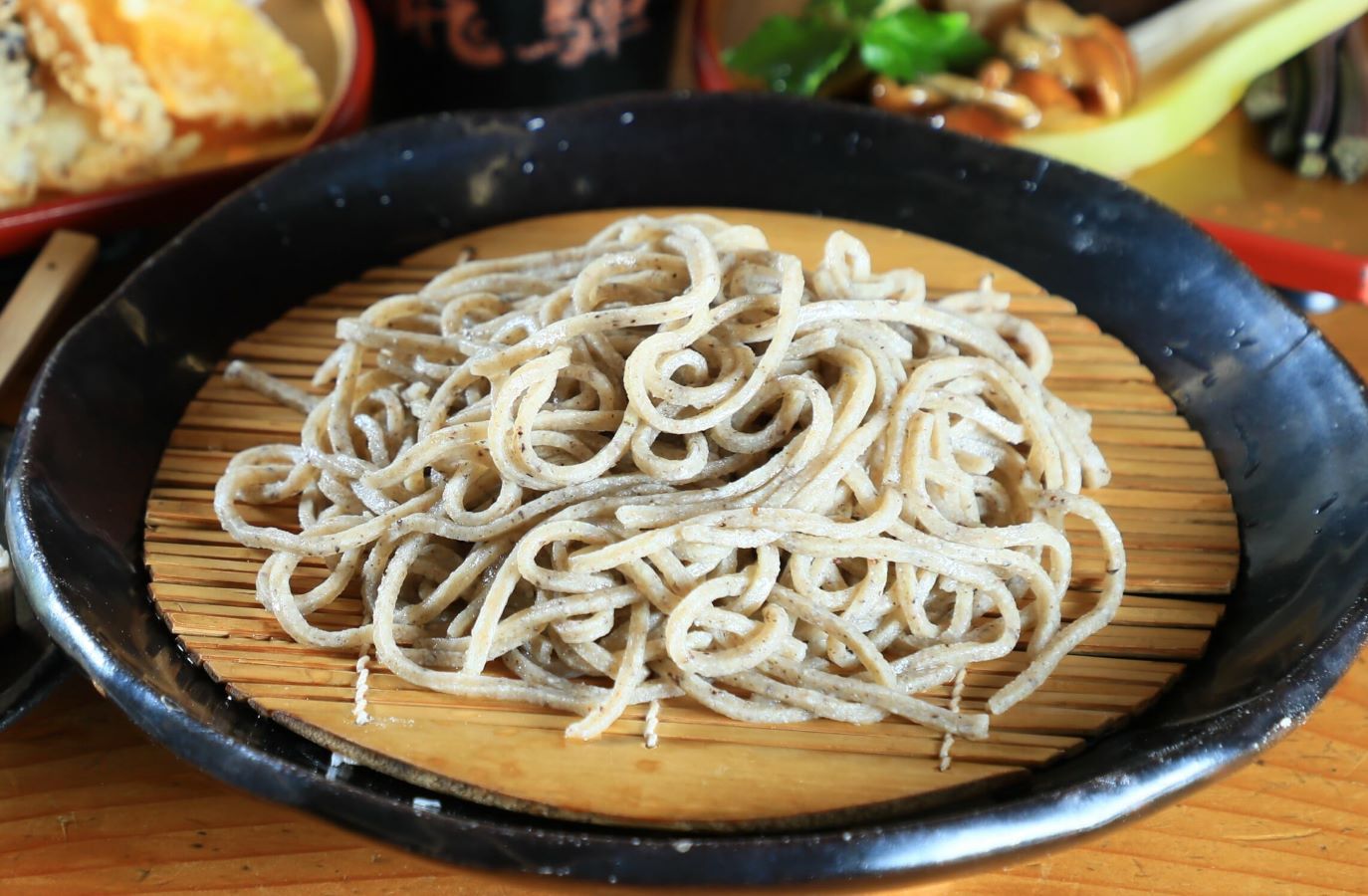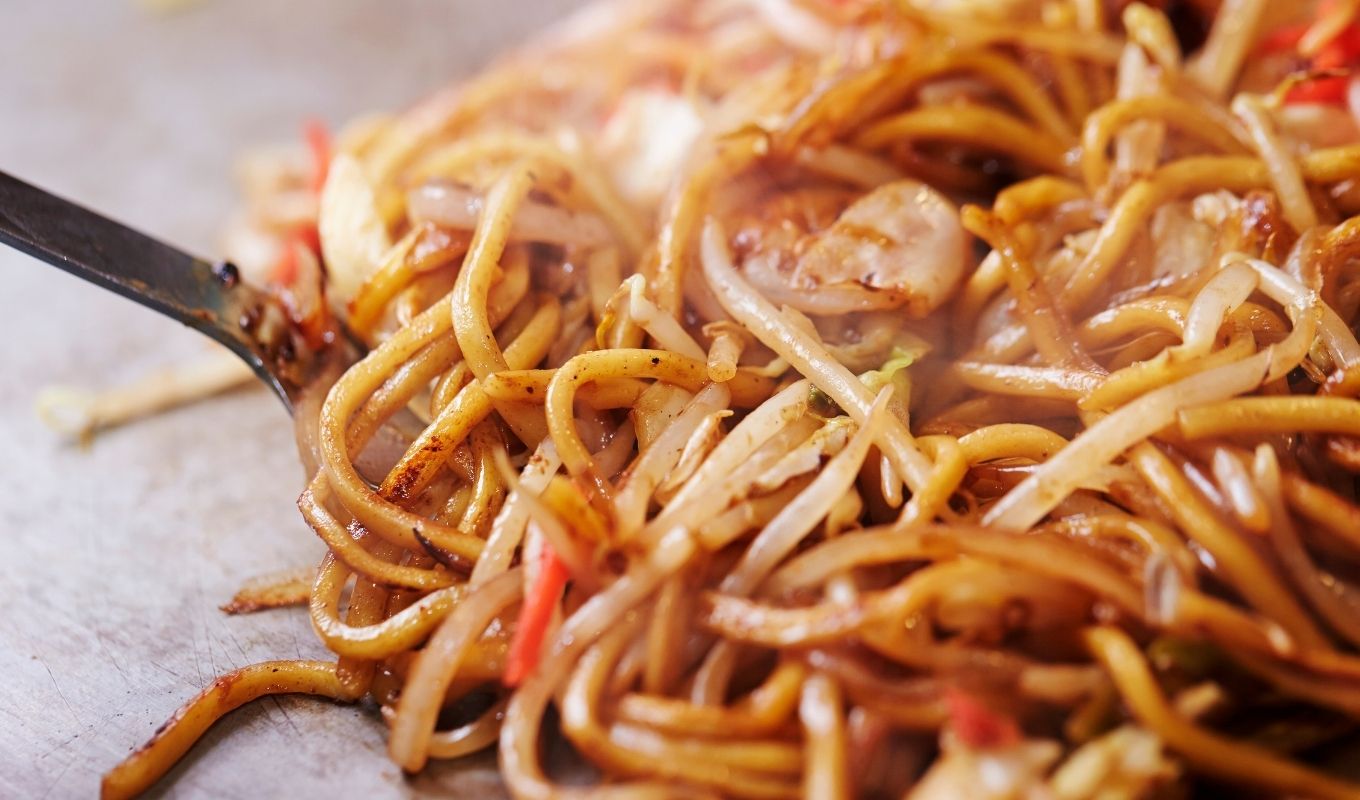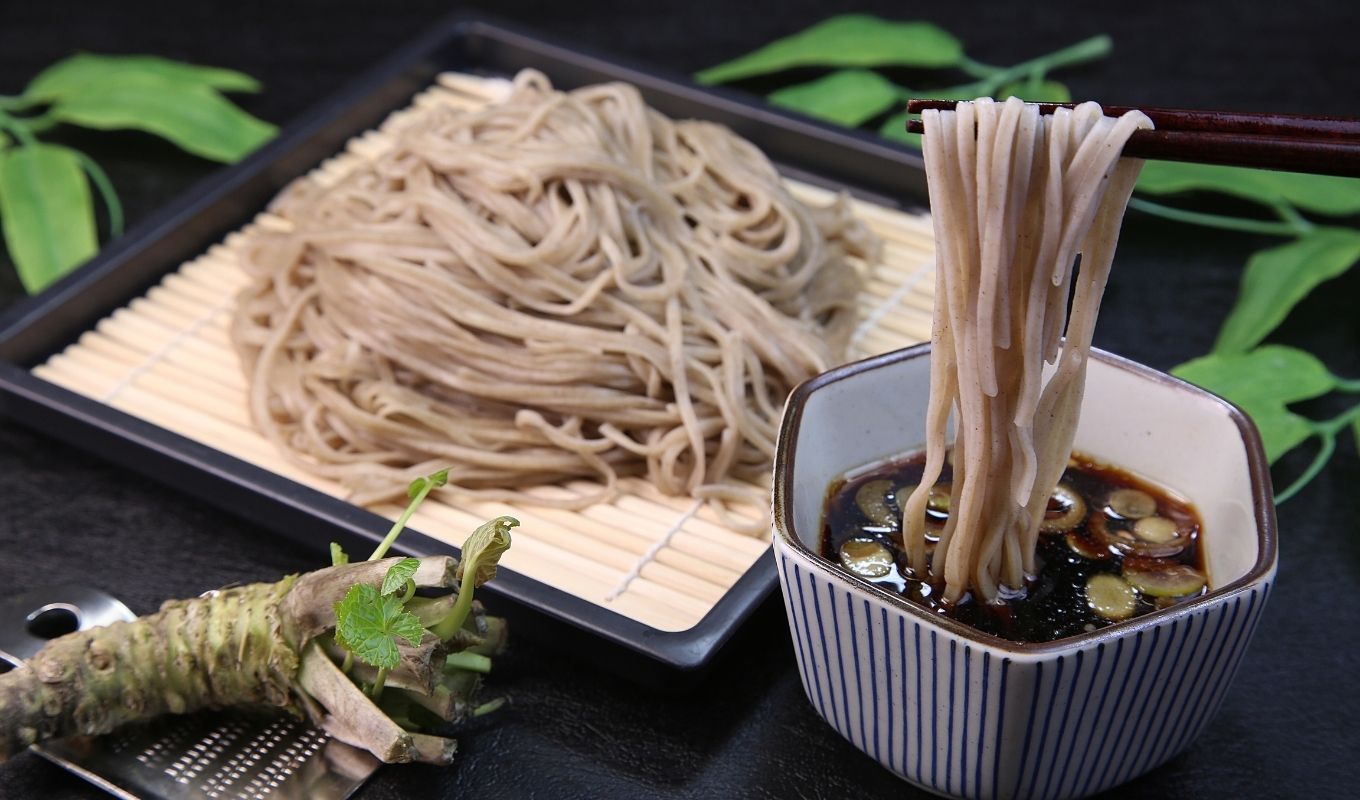Soba is a type of Japanese noodle made from buckwheat flour. It has become increasingly popular not only in Japan but also in other parts of the world due to its unique taste and nutritional benefits.
 Soba noodles are thin, brownish-grey noodles that are typically served chilled with dipping sauce or in hot broth.
Soba noodles are thin, brownish-grey noodles that are typically served chilled with dipping sauce or in hot broth.
Buckwheat, the main ingredient in soba, is a highly nutritious grain that is rich in protein, fiber, and various vitamins and minerals. Soba noodles are a healthier alternative to other types of noodles because they are lower in calories, carbohydrates, and fat. They are also gluten-free, making them a great option for people with gluten intolerance or celiac disease.
Aside from its nutritional benefits, soba also has cultural significance in Japan. It is a traditional food that has been consumed for centuries and is often associated with longevity and good health. The process of making soba noodles is also considered an art form, with skilled soba makers using special techniques to create the perfect texture and flavor.
History of Soba

Soba, also known as buckwheat noodles, has a long and fascinating history that dates back to ancient times. While the exact origins of soba are unknown, it is believed that the Japanese began cultivating buckwheat around 1000 BCE.
By the 16th century, soba had become a staple food in Japan, particularly in the mountainous regions where rice cultivation was difficult. The noodles were often served cold with a dipping sauce, making them a refreshing and nourishing meal during the hot summer months.
During the Edo period (1603-1868), soba became even more popular, and soba shops began to pop up all over Japan. These shops, known as soba-ya, served a variety of soba dishes, including hot and cold noodles, as well as side dishes like tempura and pickles.
Today, soba remains a beloved dish in Japan and is enjoyed by people all over the world. While traditional soba is made with buckwheat flour and water, modern variations may include other ingredients like wheat flour, cornstarch, or even green tea powder.
Types of Soba

Soba is a type of Japanese noodle made from buckwheat flour. It is a staple of Japanese cuisine and is enjoyed in many different forms. Here are some of the most popular types of soba:
- Zaru soba: This is the most basic form of soba. The noodles are served cold on a bamboo tray with a dipping sauce made from soy sauce, mirin, and dashi. It is typically garnished with sliced green onions and wasabi.
- Kake soba: This is another simple form of soba. The noodles are served hot in a broth made from dashi, soy sauce, and mirin. It is typically garnished with sliced green onions and grated daikon.
- Tenpura soba: This is soba served with tempura, which is a type of Japanese fried food. The tempura can be made from shrimp, vegetables, or other ingredients. It is typically served with a dipping sauce made from soy sauce, mirin, and dashi.
- Curry soba: This is soba served with Japanese-style curry. The curry is typically made with meat and vegetables and is served over the soba noodles.
- Yaki soba: This is soba that has been stir-fried with meat, vegetables, and other ingredients. It is typically served with a sauce made from soy sauce, Worcestershire sauce, and ketchup.
Each type of soba has its own unique flavor and texture. Whether you prefer your soba hot or cold, with broth or dipping sauce, there is a type of soba that is sure to please your taste buds.
How to Cook Soba
Soba is a traditional Japanese noodle made from buckwheat flour. It’s a delicious and healthy alternative to other types of noodles, and it’s easy to cook. Here’s how to prepare soba noodles perfectly every time.
Step 1: Boil the Water
Fill a large pot with water and bring it to a boil. You’ll need about 4-6 quarts of water for every 8 ounces of soba noodles.
Step 2: Add the Soba Noodles
Once the water is boiling, add the soba noodles. Use a pair of chopsticks or a fork to gently separate the noodles so they don’t clump together. Cook the noodles for about 4-5 minutes, or until they’re tender but still firm.
Step 3: Drain and Rinse the Noodles
When the noodles are cooked, drain them in a colander and rinse them under cold running water. This will stop the cooking process and remove any excess starch from the noodles.
Step 4: Serve the Noodles
Soba noodles can be served hot or cold, depending on your preference. If you’re serving them hot, you can add them to a soup or stir-fry. If you’re serving them cold, you can toss them with a dressing or dipping sauce.
Tips:
- Don’t overcook the noodles, or they’ll become mushy.
- Be sure to rinse the noodles thoroughly after cooking to remove any excess starch.
- Soba noodles can be stored in an airtight container in the refrigerator for up to 3 days.
Soba noodles are a delicious and healthy addition to any meal. With these simple steps, you can cook soba noodles perfectly every time.
Serving Suggestions

Soba is a versatile dish that can be served in a variety of ways. Here are a few suggestions:
- Cold Soba Salad: Cook soba noodles according to package instructions, then rinse with cold water and drain. Toss with your favorite vegetables (such as cucumbers, carrots, and bell peppers) and a dressing made from soy sauce, rice vinegar, sesame oil, and a touch of honey. Top with sliced green onions and sesame seeds.
- Hot Soba Soup: Bring a pot of chicken or vegetable broth to a boil. Add soba noodles and cook for 3-4 minutes, until tender. Serve in bowls with sliced green onions, nori strips, and a sprinkle of shichimi togarashi (Japanese seven spice).
- Soba Stir-Fry: Cook soba noodles according to package instructions, then rinse with cold water and drain. Heat a wok or large skillet over high heat and add a tablespoon of oil. Add sliced vegetables (such as bell peppers, onions, and snow peas) and stir-fry for a few minutes until tender-crisp. Add the soba noodles and a sauce made from soy sauce, rice vinegar, and a touch of sugar. Toss everything together and serve hot.
These are just a few ideas to get you started. Soba can be customized to your tastes and preferences, so feel free to experiment with different ingredients and flavors.
Health Benefits of Soba
Soba is a type of Japanese noodle made from buckwheat flour. It has been a staple in Japanese cuisine for centuries and is becoming increasingly popular in other parts of the world due to its many health benefits. Here are some of the health benefits of soba:
- Rich in nutrients: Soba is a good source of protein, fiber, and essential nutrients like thiamin, riboflavin, and niacin. It is also high in antioxidants, which help to protect the body against damage from free radicals.
- May help with weight loss: Soba is low in calories and high in fiber, which can help you feel full for longer and reduce your overall calorie intake. It is also a good source of protein, which can help you maintain muscle mass while losing weight.
- May reduce the risk of heart disease: Soba is high in compounds called flavonoids, which have been shown to help reduce the risk of heart disease. It is also low in saturated fat and cholesterol, which are both risk factors for heart disease.
- May improve digestion: Soba is high in fiber, which can help to regulate digestion and prevent constipation. It also contains resistant starch, which is a type of fiber that can help to feed the beneficial bacteria in your gut.
- May help to regulate blood sugar: Soba is low on the glycemic index, which means it causes a slower rise in blood sugar levels compared to other carbohydrate-rich foods. This can help to prevent spikes and crashes in blood sugar levels, which can be beneficial for people with diabetes.
Overall, soba is a nutritious and delicious food that can provide a range of health benefits. It is easy to prepare and can be enjoyed in a variety of dishes, from soups to salads to stir-fries. Try incorporating soba into your diet for a healthy and satisfying meal!
Where to Find Soba
Soba is a popular dish in Japan and can be found in many restaurants across the country. However, not all soba is created equal, and some places serve better soba than others. Here are some of the best places to find soba in Japan:
Sarashina Horii (Kyoto)
Sarashina Horii is a popular soba restaurant in Kyoto that has been serving delicious soba for over 200 years. The restaurant uses high-quality buckwheat flour and pure mountain water to make their soba, resulting in a unique and delicious flavor. The restaurant also offers a variety of dipping sauces and toppings to complement the soba.
Yabu Soba (Tokyo)
Yabu Soba is a popular soba restaurant in Tokyo that has been around since 1880. The restaurant uses traditional methods to make their soba, including grinding the buckwheat flour by hand and using natural spring water. The soba at Yabu Soba is served with a variety of dipping sauces and toppings, including tempura and seaweed.
Okina Soba (Nagano)
Okina Soba is a small, family-owned soba restaurant in Nagano that has been serving delicious soba for over 100 years. The restaurant uses locally sourced buckwheat flour and pure mountain water to make their soba, resulting in a unique and authentic flavor. The soba at Okina Soba is served with a variety of dipping sauces and toppings, including grated daikon and green onions.
Overall, there are many great places to find soba in Japan, and these are just a few of the best. Whether you’re looking for traditional soba or something a little more modern, there is sure to be a restaurant in Japan that serves the perfect bowl of soba.



